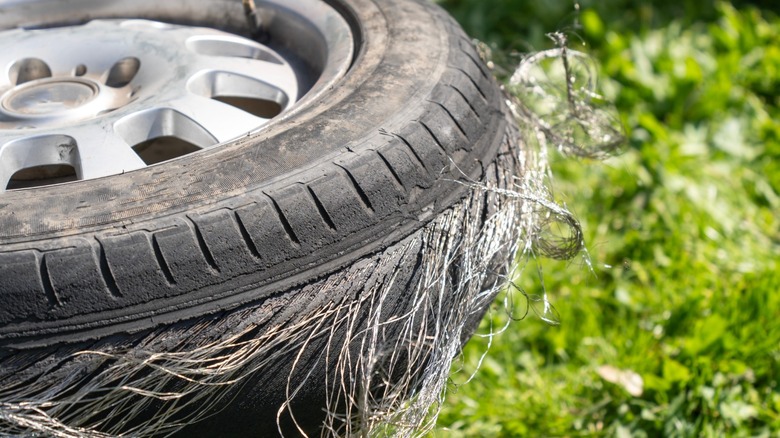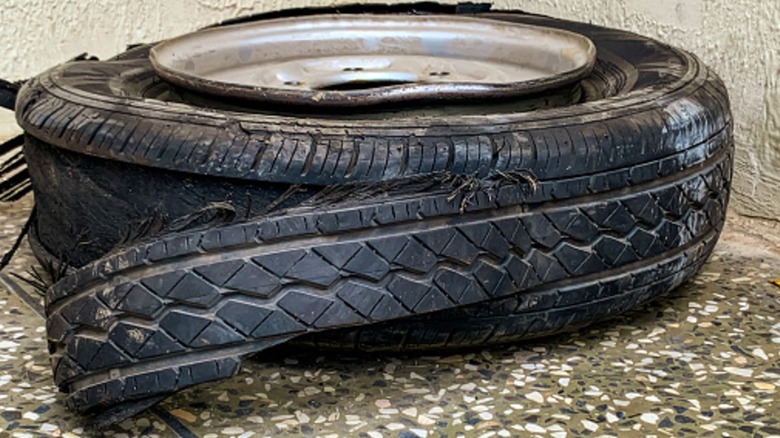Why Tires Have Wires In Them (And What It Means If You Can See Them)
Forget what the cartoons may make you believe; tires aren't just simple rubber tubes filled with air. There are many parts that come together to make a modern tire safe and sturdy. You may already be familiar with the outer parts: the tread that makes contact with the ground and the sidewalls, where you usually have branding, numbers, and codes written. But inside the tire, there are fabrics, metal cords, cables, and other components that help the tire retain its shape and lend durability.
If you see wires in a tire, depending on the brand or type of tire, you could be looking at different components inside. Most likely, what you'd be looking at are steel belts. They're located under the tire tread, and are there to help the tire stay flat and give the tread more resistance and rigidity. If you can see a weave of wires encased in rubber around the inner circumference of the tire, then you're likely seeing the bead bundle, which is important for keeping the tire secured to the wheel. You may also see ply fabrics and call them wires since some of them could be a mesh of polyester cords.
Regardless, seeing any of these wires exposed spells the end of your tire's life. None of these are meant to be visible on a healthy tire. If you can see plenty of wires, that tire has obviously completely failed. You should replace the tire immediately — and make sure to replace your tires in pairs when you do.
There are several reasons your tire wires may be exposed
There are various ways a tire can become so damaged that the wires become exposed. For instance, if you can see the steel belts, then that means the tire tread has likely worn or degraded. Going by standard tire tread check routines and proper car maintenance procedures, no tire should even reach the point where the treads have gone bald, let alone wearing out to the point that it's exposing key structural components. It may still be drivable, but you run the risk of tire failure or blowout, which is very dangerous.
Apart from wear, direct tire damage is another thing that can expose cables, cords, and wires. Say you're driving, and you enter a deep pothole with sharp edges that impact your tire. Your tire tread could get torn open to reveal steel cables or the plies deeper inside the tire. While a small puncture, from a nail or similar object, can be patched, any injury wide enough to show wires will not meet the quarter-inch rule, meaning it can't be repaired. Puncture damage or deep scrapes on a tire's sidewall could also reveal wires, and the NHTSA has unequivocally said that all sidewall injuries cannot be repaired. Anything that reveals the wires like that means that the tire is unfit and most likely illegal for the road.

